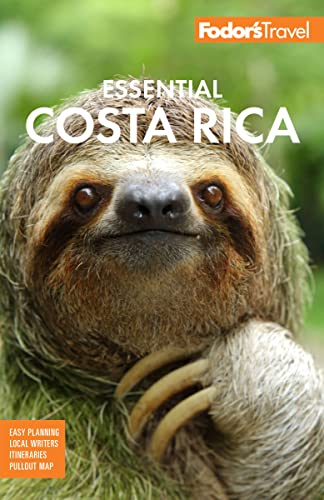Ballena National Marine Park
Great snorkeling, whale-watching, and beachcombing draw visitors and locals to Ballena National Marine Park, which protects four relatively tranquil beaches as well as a mangrove estuary, a remnant coral reef, and a vast swath of ocean.
Playa Uvita, fronting the small town of Bahía Ballena, is the longest, widest, and most visited beach, and the embarkation point for snorkeling, fishing, and whale-watching tours. Restaurants and cabinas line the nearby main street of the town. Playa Colonia, the most easily accessible beach, has safe swimming and a view of rocky islands. Playa Ballena, south of Playa Colonia, is a lovely strand backed by lush vegetation. Finally, tiny Playa Piñuela is the prettiest of the park beaches, in a deep cove that serves as the local port. It's also the narrowest beach, with a pebbled slope down to the sand. Along with the tropical fish you'll see while snorkeling, you may be lucky enough to see humpback whales and dolphins.
Best Time to Go
December to April is the best time for guaranteed sunny beach weather, as well as for sightings of humpback whales with their young. The whales also roam these waters in late July through late October. Bottlenose dolphins abound in March and April.
Fun Fact
Playa Uvita features a tombolo, a long swath of sand connecting a former island to the coast. At low tide, the exposed brown sandbar resembles a whale's tail.
Best Ways to Explore
Beachcombing
The park's beaches are ideal to explore on foot, especially Playa Uvita, which has the longest and widest stretch of sand. Visitors and locals flock here in the late afternoon to catch spectacular sunsets. Don't forget your camera! At low tide, you can walk out onto the Whale's Tail sandbar. During the day, you'll see moving shells everywhere—hermit crabs of every size are constantly scuttling around. Although it all looks idyllic—and it mostly is—don't leave valuables unattended on the beach.
Camping
If you brought a tent, pitch it here. Camping on the beach is allowed at Playas Ballena, Colonia, and Piñuela. You can't beat the price, as camping is included in the park admission. Every beach has sanitarios (basic toilets) and cold-water showers. But bring your own drinking water. Costa Ricans are avid (and often noisy) campers, so try to avoid busy weekends and school holidays.
In and On the Water
Swimming here is relatively safe, but check with the park ranger or your hotel about the best swimming spots. Watch for the banda amarilla (yellow ribbon) signs that indicate dangerous currents. Whale- and dolphin-watching excursions are also a fun option—bottlenose dolphins are most often spotted, but humpback whales, especially mothers with babes, are the stars of the show. If you want to be the captain of your boat, sea kayaks are a popular way to explore the park's mangroves and river estuaries. Playa Ventanas, just south of the park's official border, has tidal rock caves you can kayak through.
Top Reasons to Go
Alone Time
If solitude is what you're after, the park's beaches are relatively uncrowded, except on weekends and school holidays when locals come to camp and relax. Neither Playa Colonia nor Playa Piñuela sees a lot of traffic, so you can have them virtually to yourself almost anytime. Just don't hang out after dark.
Beaches
Miles of wide, sandy beach backed by palm trees and distant green mountain ridges make this one of the most scenic and accessible coastlines in the country. Playa Uvita and Playa Ballena, with their warm, swimmable waters and soft sand, attract the most beachgoers.
Whales and Dolphins
Catching sight of a mother humpback whale with her young swimming alongside is a thrill you won't soon forget. And watching dolphins cavorting around your boat is the best entertainment on water.




